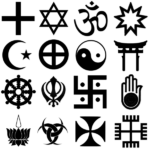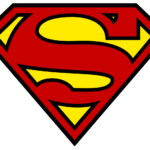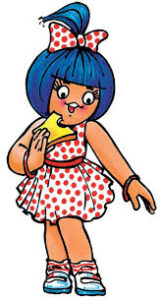Introduction
Daily, we use hundreds and thousands of images, pictures, references, words, sounds, gestures, signs and concepts in our formal or informal communication. Ever thought of why we have to use them and how they are being employed in communication. By mention of images and pictures in communication, we come across the words like icon and symbol. So what are these icons and symbols and how are they related to signs and communication and especially in advertising and brand communication. I will take you through these interesting tools which we humans have developed through course of time.
Icons and symbols – Are they synonyms?
Firstly, I will present what are generally termed as icons. Here are the popular examples of icon.
 Fig 1. Icons in a popular word processing program
Fig 1. Icons in a popular word processing program
The above image shows a menu list of a popular word processing program with its icons. We all know (at least most of us) what these icons mean. Even if anyone, who does not know, will find out what it means due to influence of computers and mobile phones.

Fig 2. A sample set of symbols
As shown in the above figure, these are….symbols. Or people today may even call these things as icons. Images, either icons or symbols of both Fig 1 and Fig 2 are fundamentally called signs. The images of Fig 1 and Fig 2 are functionally same, that is, they represent something or some concept. But they are different due to what they represent and hence the images of Fig 1 and Fig 2 are of different types just as nouns, pronouns and verbs are. Such signs are widely and consciously used in communications and representations of various entities like religion, company, enterprise, currency, flag, tools and so on. Following are the famous signs of our today’s world: Apple (Mobile phone company), Rupee (Currency sign of Bhaarat), power button sign on computers, State Bank of India.
![]()



Fig 3: Some popular symbols
What I have noticed is that many use the words ‘icon’ and ‘symbol’ interchangeably. This does cause misunderstanding when trying to make sense of what one heard. For example, one says, “I want the icon like an ‘OM’ for our company.” Here the question is whether the visual and audio form of OM is an icon or a symbol and in general, whether the logo of any company is icon or symbol. In addition, what is an icon or a symbol? Are they just graphics, drawings or sign? Is icon and symbol different? Many puzzling questions but the answer is simple.
All the above shown images are signs. Signs are forms ( forms can be visual, audio, event, static and dynamic) which have meanings or refers to some meaning or thing. As I said earlier, just like nouns, verbs, pronouns which are types of words, there are three basic types of signs viz. a.) Icon b.) Index and c.) Symbol.
In fact, the whole system of human communication is built on the sign and signification process/model. CS Pierce (1839-1914), an American linguist and Ferdinand de Saussure (1857-1913), a Swiss linguist and semiologist, deciphered this whole pattern of sending and receiving messages, which is known as Semiotics and Semiology respectively. So, semiotics (also called semiotic studies) is the study of meaning-making, which is the study of sign process (semiosis) and meaningful communication. The most accepted definition for each is as follows:
• Icon
The term icon is used for the signs, which have the physical or elemental resemblance with what it refers or represents. Olympic signs for every sport fall in the category of icon. Even the signs used in computers are mostly icons because their forms have resemblance to what it represents. But what about the icon of ‘floppy disk’ for saving function. Yes, at present this icon does not have any logical connection, at least for the ones who came into this world after the demise of floppy disk. Such icons attain the symbolic status once the reference or the logical connection is lost.




Fig 4: Icons
• Symbol
And the symbol is at the opposite end of the icon. They have no resemblance with what they stand for or represent. The relation between the meaning/reference signified and the form (i.e. audio/visual) is arbitrary and by choice. This relation and meaning is culturally learned and acquired by constant reminders and usage. Therefore, words and sentences are symbolic. Their pronunciation as well as their written form does not have any relation and resemblance with the meaning it stands for.




Fig 5: Symbols
Let us say “Dog”; does its pronunciation resemble to the looks of a dog? The same can be said for its written form. Thus, it is a symbol for the actual dog. Therefore, rightfully it is said: “language is a symbolic system”. Symbols, due to their arbitrary signification, give communication more flexibility and creativity. Also due to this reason even an uneducated person can speak and acquire language culturally and can communicate effectively too.
Advertising also uses this symbolicity model to develop desired perception. Symbolic signification ironically does not have any logical platform. This pattern excels on the intention but one has to put effort in establishing the meaningful relation.
And just opposite to the icon, certain symbol after certain time may become iconic. Nike swoosh is now an icon of Nike as it is now one element of Nike’s identity. Same can be said for SBI symbol and Mcdonald symbol. And Air India must be missing ‘the Maharaja’ whereas Amul Girl seems to own otherwise what we call Amul Butter.



Fig 6
Such thin differences in synonymous looking words are common in every language. The ones who know how to benefit from language will definitely harp on such nuances of words, meanings and concepts.
We may like it or not, language and signification are equally practical and experiential phenomenon for us, literate or not. Just prepare yourself to benefit from as big as the 50 billion USD unified communications industry*.
So now when you design a website or a brochure or even a print ad or TVC, think of the representations, references and significations which a particular visual, situation or message it would produce. Also this might help you to decide whether to use icon or symbol for a given situation.
*”https://globenewswire.com/news-release/2016/05/17/840632/0/en/Unified-Communications-Market-size-worth-96-Billion-by-2023-Global-Market-Insights-Inc.html”
